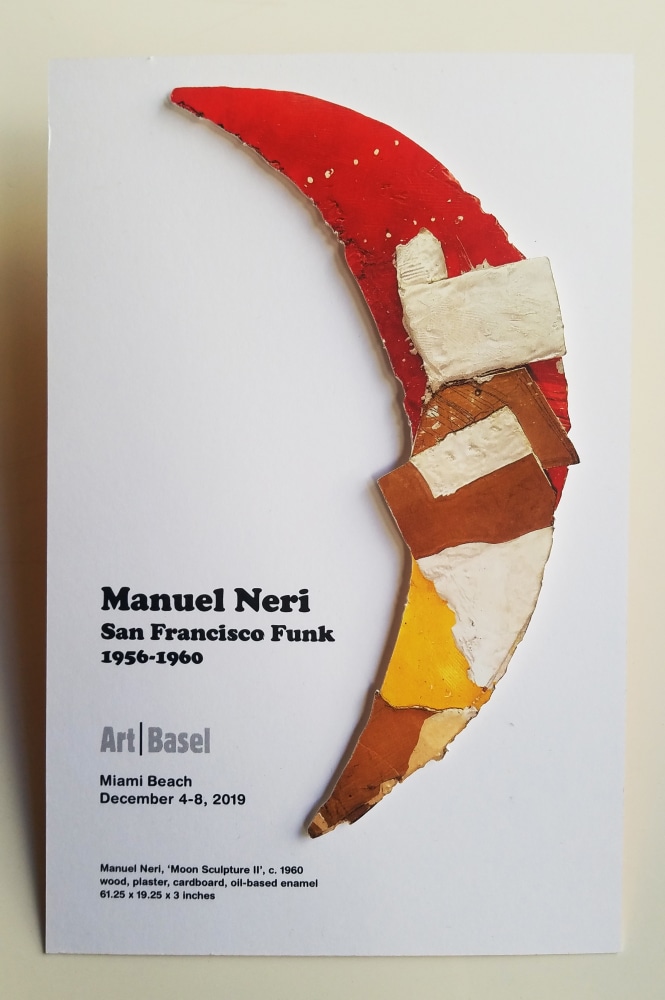
Manuel Neri: San Francisco Funk 1956-1960, Art Basel Miami Beach, Survey, Booth S14
Hackett Mill will present a solo exhibition of Manuel Neri’s sculptures from 1956 to 1960 and the ways in which he played a major role in creating an artistic voice on the West Coast that stood out from the abstract expressionism that was dominant throughout the rest of the United States. His embrace of “junk” material along with San Francisco’s jazz-infused Beat culture led to his improv-infused working method in assemblage with the goal of redefining what constitutes fine art. Neri’s sculptural forms of birds, moons, heads, and figures demonstrate the raw abandon of an artist finding his own identity in Post-War San Francisco. In the process, Neri laid the foundation of an enduring artistic movement: Bay Area Funk.
By the end of the 1950s, there was a growing sense of rebellion in the San Francisco Bay Area, particularly among its artists, musicians and poets, many of whom, like Neri, were Korean War veterans, studying on the GI Bill. “The pent-up frustration of the post-war generation was compounded by the political mood in Washington, which demanded conformity and patriotism under the guise of anti-communism,” according to art historian Thomas Williams. As a Mexican American artist, Neri was fueled by a sense of restlessness and dissatisfaction with social and artistic norms and he emerged to disavow the traditional concept of art, to break down the barriers between disciplines and materials and to shift the focus from product to process.
Neri studied at various schools in the Bay Area during the 1950s (with a hiatus for his service in the Army in 1954), including at the California School of Fine Arts, now the San Francisco Art Institute, where he witnessed the origins of the Bay Area Figurative movement through the work of David Park, and his teachers Richard Diebenkorn and Elmer Bischoff. He was encouraged by Diebenkorn to focus on sculpture and in 1956 he began working with readily available and cheap material–cardboard, wire, burlap, string, cloth, and plaster–to create heads, birds, moons, and the abstracted arc of the human torso into loop forms. The materials were chosen for their practicality as well as for their malleability. “Neri remembers that he could not afford better materials, but he also acknowledges the funk impulse to try anything, even junk. Consistent with the funk aesthetic, Neri made no effort to disguise or elevate his humble materials.” Plaster became a favorite medium as it forced him to work quickly and to improvise, yet it maintained its rawness and was compatible with paint.
Neri's sculpture and painting is included in more than thirty American public collections, including the Metropolitan Museum of Art and the Whitney Museum of American Art, New York; San Francisco Museum of Modern Art and Fine Arts Museums of San Francisco; Corcoran Gallery of Art and Smithsonian American Art Museum, Washington, D.C., and San Jose Museum of Art. In 2006, Neri received the Lifetime Achievement in Sculpture award from the International Sculpture Center, and in 2008, he received the Bay Area Treasure Award from the San Francisco Museum of Modern Art.